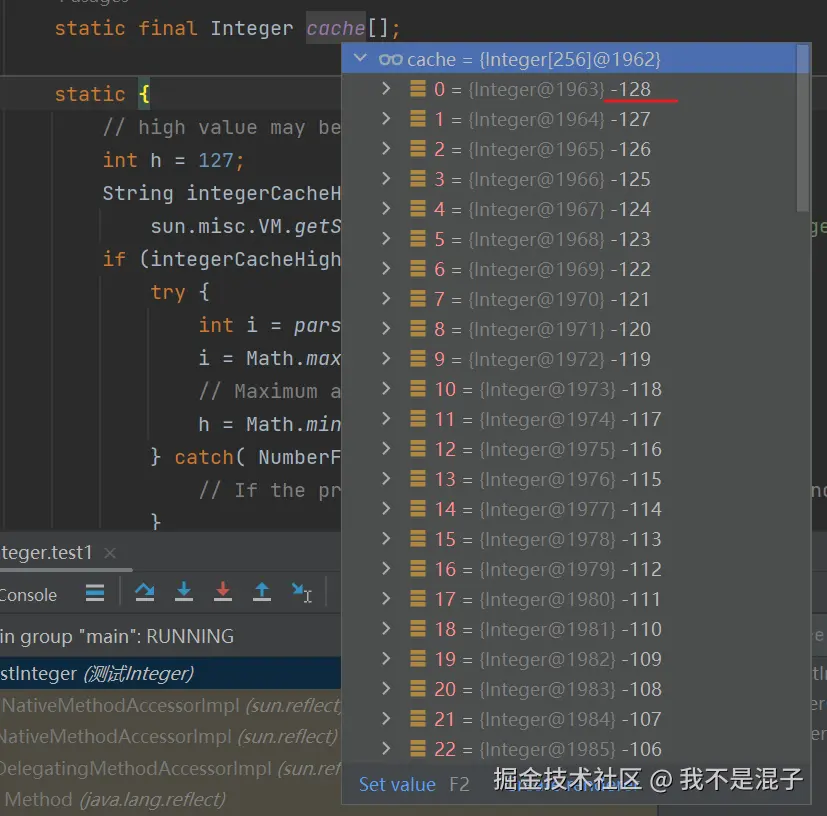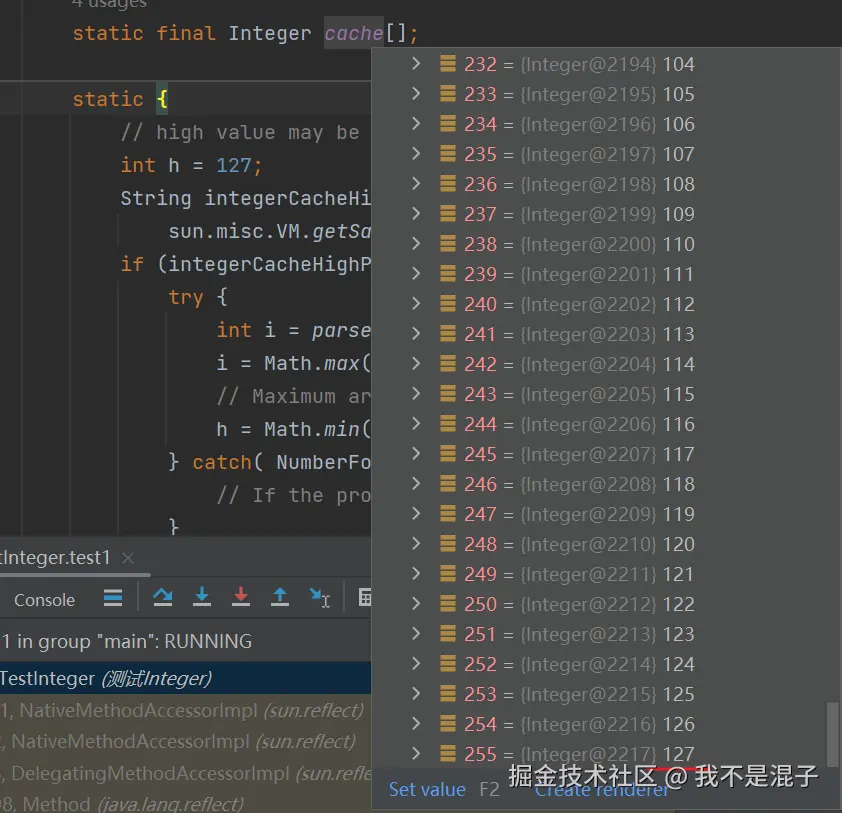首先,我们先来看一下下面的代码:
ini
Integer a = 20;
Integer b = 20;
System.out.println(a == b);
Integer c = 128;
Integer d = 128;
System.out.println(c == d);小伙伴们能否一眼看出结果?然后用idea运行看看,跟自己想的结果是否一样?
今天我们就来说说java中Integer的使用问题。 下面先贴出运行结果:
 至于为什么会出现以上的结果呢?我们先来看看
至于为什么会出现以上的结果呢?我们先来看看"=="操作符,对于对象,也就是引用类型,"=="操作符比较的是对象在内存中的地址(即是否为同一个对象)。Integer不是java中的基础数据类型,Integer是int的包装类,属于对象,所以例子中的System.out.println(a == b);和System.out.println(c == d);是判断a对象和b对象、c对象和d对象的内存地址是否相等。
那么为什么会出现一个是true一个是false的结果呢?我们来看下JDK的源码:
ini
private static class IntegerCache {
static final int low = -128;
static final int high;
static final Integer cache[];
static {
// high value may be configured by property
int h = 127;
String integerCacheHighPropValue =
sun.misc.VM.getSavedProperty("java.lang.Integer.IntegerCache.high");
if (integerCacheHighPropValue != null) {
try {
int i = parseInt(integerCacheHighPropValue);
i = Math.max(i, 127);
// Maximum array size is Integer.MAX_VALUE
h = Math.min(i, Integer.MAX_VALUE - (-low) -1);
} catch( NumberFormatException nfe) {
// If the property cannot be parsed into an int, ignore it.
}
}
high = h;
cache = new Integer[(high - low) + 1];
int j = low;
//就是这里初始化[-128,127]这个范围的数据放入到cache数组中。
for(int k = 0; k < cache.length; k++)
cache[k] = new Integer(j++);
// range [-128, 127] must be interned (JLS7 5.1.7)
assert IntegerCache.high >= 127;
}
private IntegerCache() {}
}通过翻阅Integer类的源码,我们发现,Integer类中有一个名为IntegerCache的静态内部类,IntegerCache类中有一个static静态代码块,java静态代码块会在类加载时运行。IntegerCache类中有一个Integer类型的cache数组,系统启动的时候就会初始化[-128,127]这个范围的数值放入cache数组中,看debug截图:


我们再来看看Integer a = 20;这行代码,在执行Integer a = 20;的时候,底层是会进行自动装箱的:
ini
Integer a = 20;
//底层会进行自动装箱
Integer a = Integer.valueOf(20);来看下valueOf方法的源码:
arduino
public static Integer valueOf(int i) {
if (i >= IntegerCache.low && i <= IntegerCache.high)
return IntegerCache.cache[i + (-IntegerCache.low)];
return new Integer(i);
}总结:
i的值 >= -128并且 <= 127的时候,就直接从IntegerCache类中的cache数组里面取,然后返回;否则的话,就调用new Integer方法去创建新的Integer对象。至于为什么是[-128,127]这个区间呢?是因为这个范围内的数值我们平时用的比较多。这是程序开发中的池化思想,对于常用的整数值,直接从缓存池中获取对象,减少了对象的创建和垃圾回收的开销。